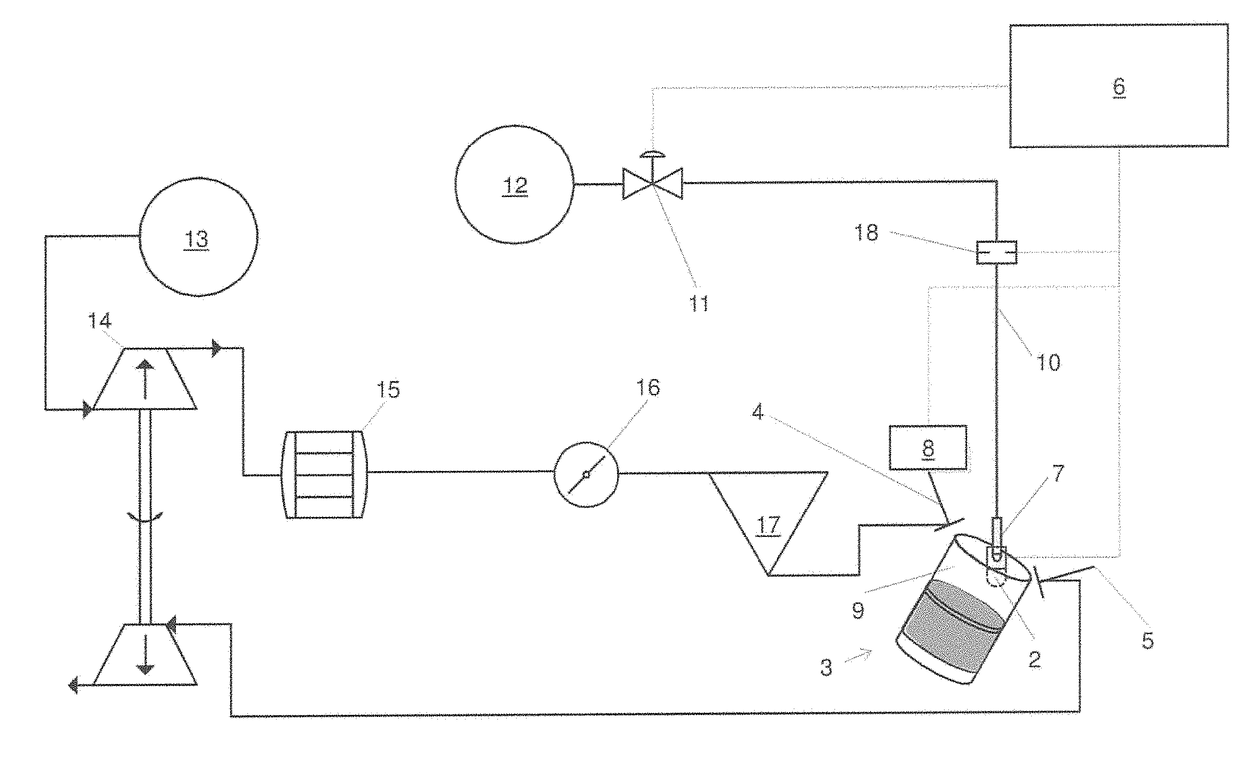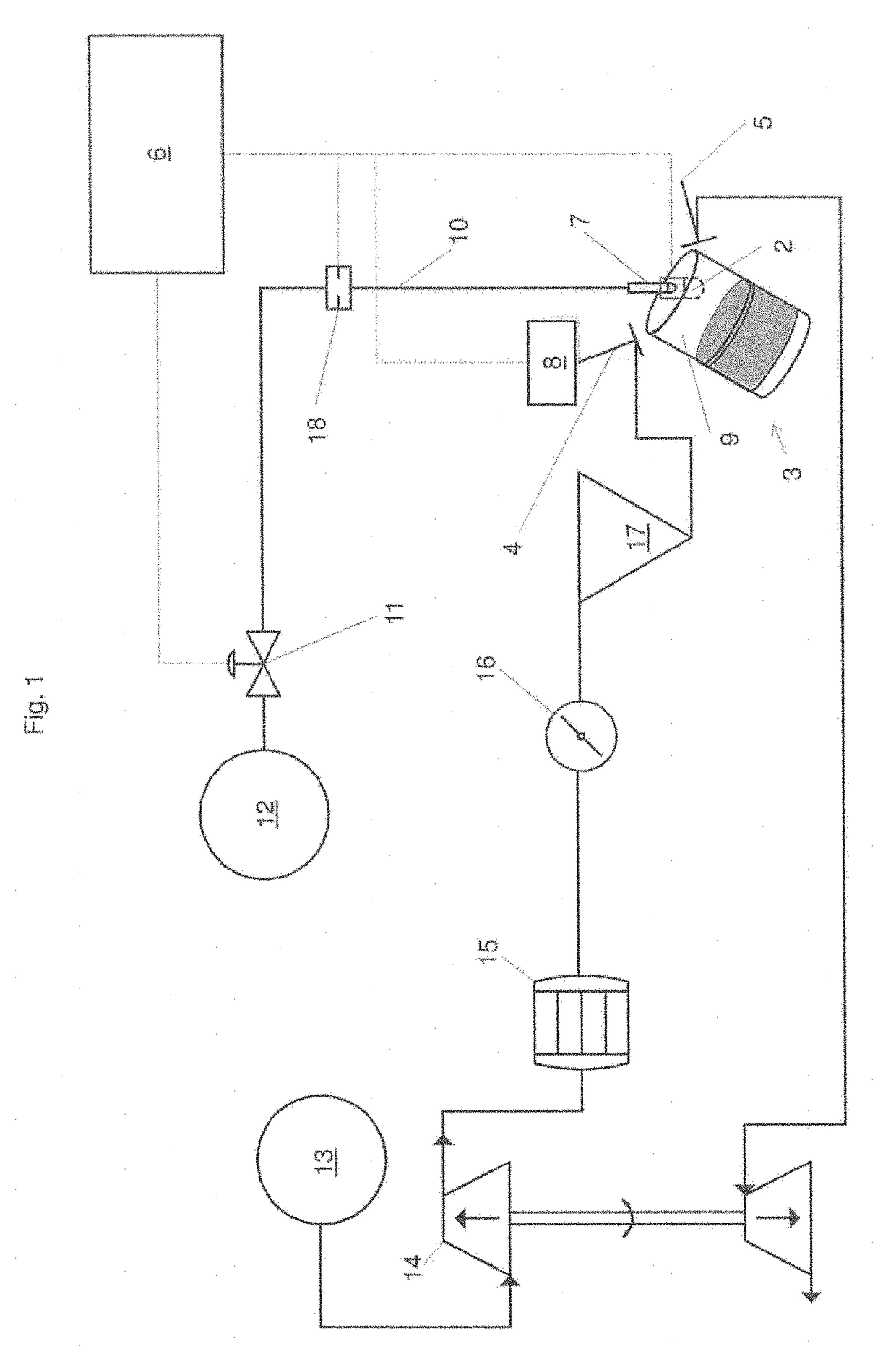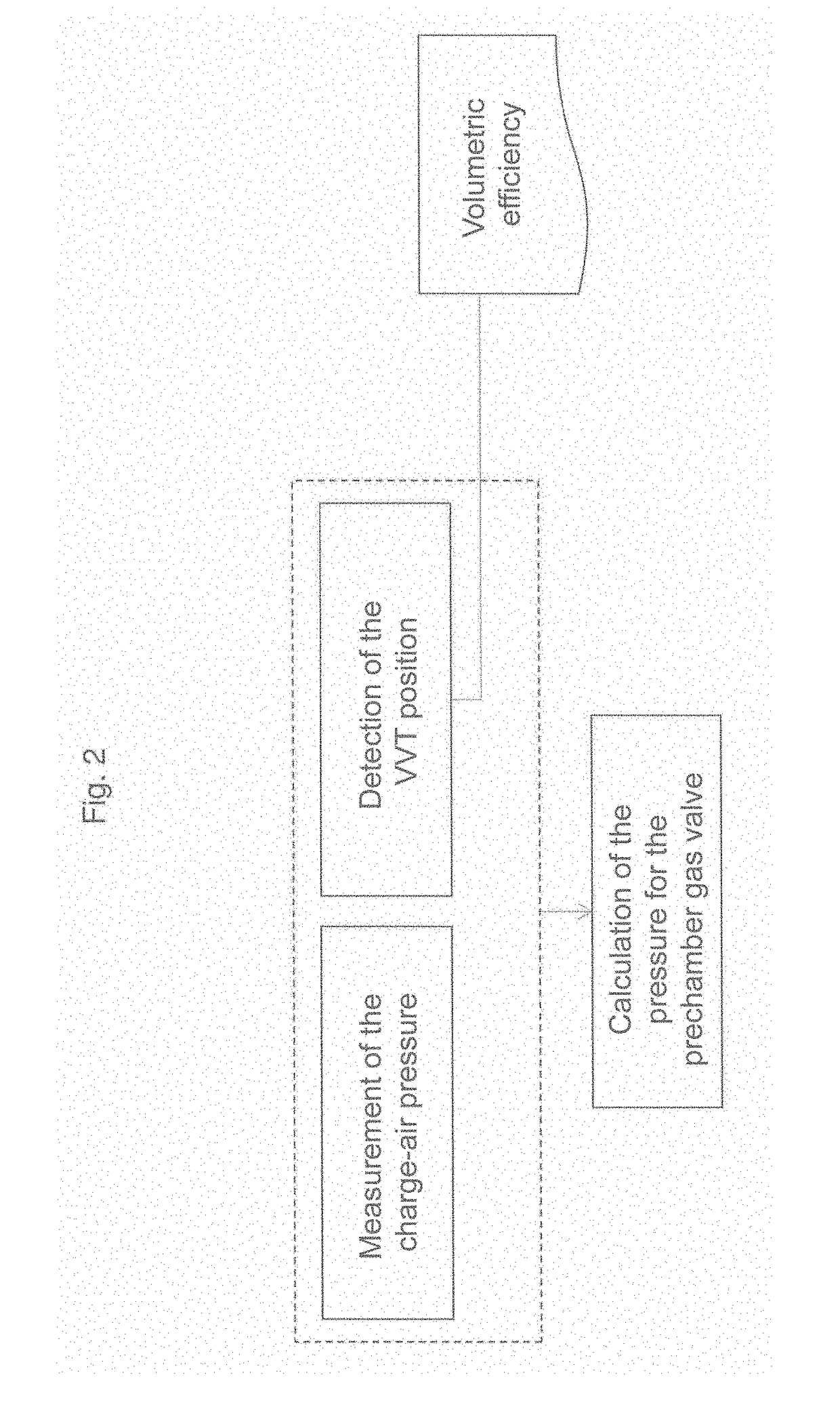Method for regulating an internal combustion engine
- Summary
- Abstract
- Description
- Claims
- Application Information
AI Technical Summary
Benefits of technology
Problems solved by technology
Method used
Image
Examples
Embodiment Construction
[0036]FIG. 1 shows an internal combustion engine 1 with a plurality of piston-cylinder units 3 (only one of which is shown in the example). The piston-cylinder unit 3 is supplied with propellant gas via inlet valves 4 (only one of which is shown). Exhaust gases are discharged via outlet valves 5 (only one of which is shown). Furthermore, a prechamber 2 is provided, which communicates via overflow openings with a main combustion chamber 9 of the piston-cylinder unit. The prechamber 2 is supplied with propellant gas (either pure propellant gas or a mixture) via a prechamber gas valve 7 which is designed here to be active.
[0037]In this exemplary embodiment, the operating characteristics of the inlet valves 4 can be varied via a variable valve train 8. Not shown is a fundamentally also (alternatively or additionally) possible variation of the operating characteristics of the outlet valves 5. The variable valve train 8 has a signal connection to a control device 6 of the internal combust...
PUM
 Login to View More
Login to View More Abstract
Description
Claims
Application Information
 Login to View More
Login to View More - R&D
- Intellectual Property
- Life Sciences
- Materials
- Tech Scout
- Unparalleled Data Quality
- Higher Quality Content
- 60% Fewer Hallucinations
Browse by: Latest US Patents, China's latest patents, Technical Efficacy Thesaurus, Application Domain, Technology Topic, Popular Technical Reports.
© 2025 PatSnap. All rights reserved.Legal|Privacy policy|Modern Slavery Act Transparency Statement|Sitemap|About US| Contact US: help@patsnap.com



